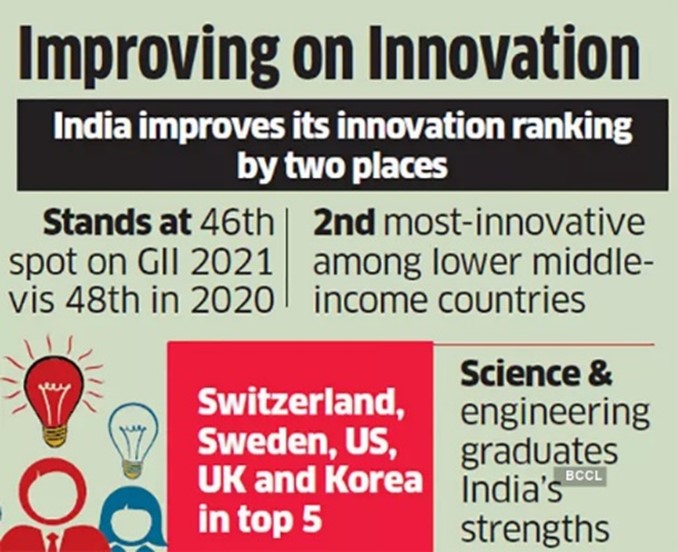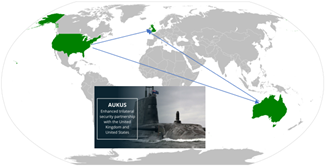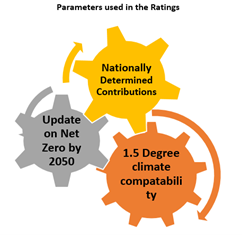Wednesday, 22nd September 2021
Facial Recognition Technology
In News
Delhi Police has started using Facial Recognition Systsem (FRS) to identify crime suspects.
About the News
- Facial Recognition technology was used by the Delhi Police to probe various cases like the 2020 north-east Delhi communal riots case, the January 26, 2021, Red Fort incident etc.
- The police currently use a “basic” level of FRS, which does not function in real-time. Lack of access to metadata is a big hurdle. Police can seemingly only tap into the driving licence and criminal databases of some adjoining States.
What is the Facial Recognition System (FRS)?
Facial recognition is a way of recognizing a human face through Artificial Intelligence. It relies on biometrics to map facial features.
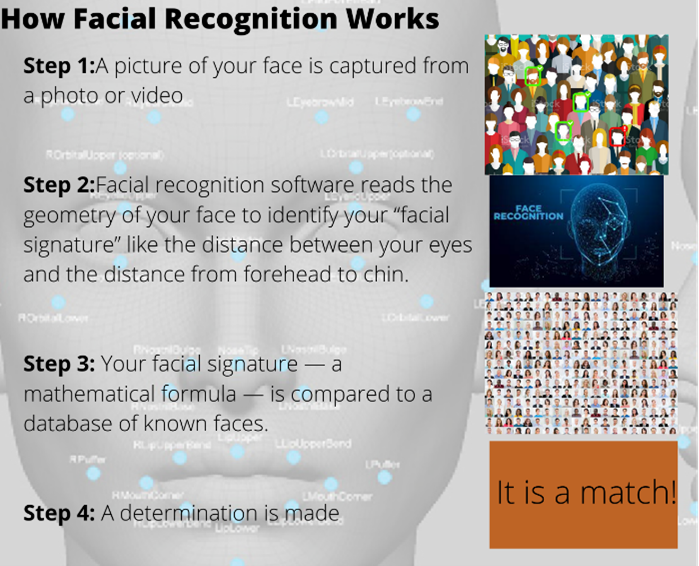
Applications
- Finding missing people: With facial recognition, law enforcement agencies have been able to track down missing children.
- Identifying criminals: Law enforcement agencies can also use facial recognition to identify criminals or suspects in crimes.
- Making flying safer: Airports across the globe are using facial recognition to identify criminals and potential threats as they enter airports or try to board flights.
- Secured login in mobile and other such devices: Using your face to unlock your devices makes sure you’re you when you access it. Apple says the chance of a random face unlocking your phone is about one in 1 million.
Concerns With this technology
- A threat to privacy: One’s facial data can be collected and stored, often without their permission. It heightens the risk of hacking and misuse of data.
- Mistaken identity may lead to false identification”
- Facial recognition isn't perfect. It works best when image used to match is clear, static images, such as a passport photo.
- Error rates rose especially when subjects were captured in crowd, not looking directly at the camera or were partially hidden by shadows or objects.
- It can be tricked: Criminals can trick facial recognition by wearing masks or facial disguises. This could lessen the effectiveness of this tech.
- Aging lowers its effectiveness: Studies have found that as people age, and their features change, facial recognition has an increasingly difficult time identifying them.
Source:
Evergrande Financial Crisis
In News
Recently, the global stock markets saw selloffs due to reports that Evergrande might default on interest payment of $83.5 million due.
About the news
- Reason for the present crisis: Due to decreasing property sales and new regulations imposed to reduce real estate-related debt by the Chinese regulators, ratings companies downgraded Evergrande.
- Thus, banks backed away from lending and the offers to repay debt in the form of property and parking spaces failed, leading to a situation wherein Evergrande may default on interest payments.
- About Evergrande: It is China’s second-largest property developer. Due to property boom in China, it expanded to 280 cities and owns more than 1,300 real estate projects. In the process it accumulated a debt of over $305 billion.
What can be the possible impacts of this Crisis?
- It may further slowdown the Chinese property market leading to defaults on loans from banks and bond market thus slowing the Chinese economy.
- It may delay the recovery of the global economy hit by the pandemic.
- Due to decrease in demand from China, global commodities such as steel might see lower prices.
- Experts are of the opinion that this has the potential to be China’s Lehman moment but for it to become a reality, a series of policy mistakes must be committed in response to this crisis.
- On India: Iron ore exports to China might take a hit if the slowdown in the Chinese real estate market continues for long.
Learnings to avoid future real estate asset bubbles
- Market data: Regulatory authorities need to work with the real estate industry to deliver robust and timely market data, analysis and information.
- Transparency and understanding: Authorities should adopt targets for delivering enhanced transparency and understanding across real estate markets for securities and derivatives.
- External policy impacts: The real estate industry should engage with governments about the impact of public policies on the real estate sector.
- Information clearing house: A platform should be established for tracking and communicating new policies and recent research to policy makers in the real estate, banking and finance sectors to address areas like developments in the derivatives market and global and national banking sector reform.
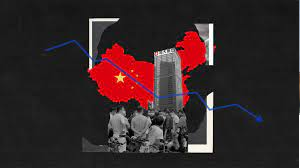
Sources:
Geographical Indication (GI) tag
In News
Tamenglong Orange & Sirarakhong Hathei Chili of Manipur have been granted the Geographical Indication (GI) tag.
About Red oranges from Tamenglong & Sirarakhing Chili
- Tamenglong Orange/ Mandarin (Citrus reticulata): It is a unique crop found only in Tamenglong district of Manipur. The plant is a perennial evergreen plant of the Rutaceae family, subtropical in distribution and the fruits weigh around 90-110g.
- Sirarakhing Chili: It is an organically grown chilli in the Sirarakhong village in Manipur’s Ukhrul district. It is one of the most sought-after chilies of Manipur and it can grow over eight inches in length.
What is Geographical Indication?
- Geographical Indication identifies that the product is specific to a particular place.
- It is the indicator of where the product is born or produced, and of its exclusive quality. For example, Goan Fani, Madhubani paintings, Meerut Scissors, etc are exclusive to the place they originate.
Significance of being GI tags
- Benefits to farmers:The GI gives the rightful share in the intellectual property to the artisan and the place of origin of the product. GI products benefit the rural economy by supplementing the incomes of artisans, farmers, weavers, and craftsmen and uplift them both socially and economically.
- Benefits to country: As GI tagging is conferred on products for their own quality and uniqueness, it becomes advantageous to India as there will be an increase in the significance, the popularity and export opportunities.
- Protects the culture: As GI tags fetch due acknowledgment and promotion of products, it helps protect and preserve the unique skills and knowledge of traditional practices of artisans that are passed down from generation to generation.
Facilitates export opportunities: GI tag opens the scope of export and marketing in foreign countries, thus bringing forex, supporting the economy, improving friendly relations, and also promoting the products.
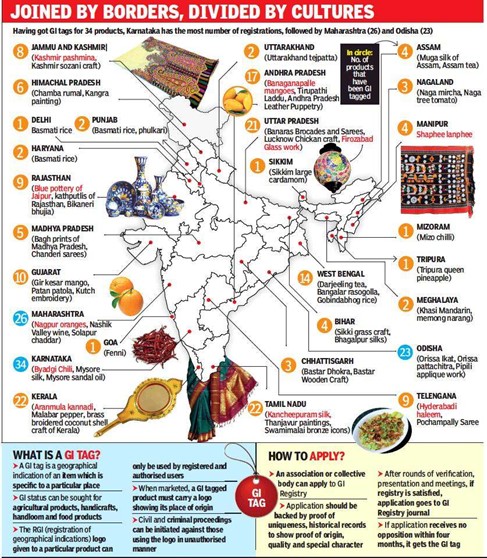
Sources:
AI and Human Rights
In News
The United Nations High Commissioner for Human Rights has called for a moratorium on the sale and use of artificial intelligence (AI) systems.
About the News
- The moratorium is regarding the artificial intelligence (AI) systems that threaten human rights until adequate safeguards are in place to ensure the technology will not be abused.
- The UN human rights office recently released a report warning of the risks of AI technologies, and emphasising that while AI can serve as a force for good, it can also cause catastrophic effects if used irresponsibly.
What are Human Rights and Artificial Intelligence (AI)?
- Human rights include the right to life and liberty, freedom from slavery and torture, freedom of opinion and expression, the right to work and education, and many more. Everyone is entitled to these rights, without discrimination.
- Artificial Intelligence (AI) refers to systems that are programmed to work and act like humans. It involves them solving problems and improving themselves. AI is developing every day.
- Amnesty and Access Now launched the Toronto Declaration, a landmark statement on the human rights impact of machine learning systems on the right to equality and non-discrimination.

How does AI aid to Human Rights?
- Right to Equality and Equity: AI can be means to social and financial inclusion through effective sharing of information in an unbiased manner.
- AI systems are increasingly being used to help deliver public services, often with the stated goal of developing more efficient systems for timely and accurate delivery of services.
- AI is also being used to improve access to healthcare in regions where there is a lack of access.
- Right to Grievance Redressal: AI may also be useful in increasing transparency and accountability for violations and abuses that may occur during protests.
- Right to Education: Tools for image recognition are helping people who are visually impaired better navigate both the internet and the real world. AI helps students in remote locations to gain access to education.
- Right to Life: Contact-tracing systems using multiple types of data (geo-location, credit card, transport system, health and demographic) and information about personal networks have been used to track the spread of the Covid-19. AI systems have been used to flag individuals as potentially infected or infectious, requiring them to isolate or to quarantine.
- Right to Freedom of Expression: AI enables people to exercise the right of peaceful assembly and related rights through their use: in mobilizing for and organizing peaceful protests; in forming networks and coalitions and so on.
What are the ways in which AI can encroach upon Human Rights?
- Rights to life, liberty and security, equality before the courts, a fair trial: States are increasingly integrating AI systems into law enforcement, national security, criminal justice and border management systems. The software can be used to falsely label certain community or person as high risk.
- Rights to privacy and data protection: AI systems are often trained through access to and analysis of big data sets. Data are also collected in order to create feedback mechanisms and provide for calibration and continual refinement. This collection of data interferes with rights to privacy and data protection.
- Right to freedom of movement: The potential for AI to restrict freedom of movement is directly tied to its use for surveillance. In systems that combine data from satellite imagery, facial recognition-powered cameras, and cell phone location information etc., AI can provide a detailed picture of individuals’ movements as well as predict future location.
- Rights to freedom of expression, thought, religion, assembly, and association: Internet companies that host content use AI to flag posts that violate their terms of service. Governments exerting formal and informal pressure on companies to address the problem of alleged terrorist content, hate speech, and so-called “fake news,” but without clear standards or definitions, has led to increased use of automated systems.
- Rights to equality and non-discrimination: AI models are designed to sort and filter, whether by ranking search results or categorizing people into buckets. Use of AI in some systems can perpetuate historical injustice in everything from prison sentencing to loan applications.
- The Special Rapporteur on extreme poverty and human rights has warned of a “digital welfare dystopia” in which unfettered data-matching is used to expose, survey and punish welfare beneficiaries and conditions are imposed on beneficiaries to undermine individual autonomy.
- Rights to political participation and self-determination: The role of AI in creating and spreading disinformation challenges the notion of fair elections and creates a threat to the right to political participation and self- The 2016 U.S. presidential election showed how a foreign power can leverage bots and social media algorithms to influence voters.
- Right to life: Autonomous weapons, currently Drones, are likely to suffer from AI’s inability to deal with nuance or unexpected events. In a conflict situation, this could result in the death or injury of innocent civilians that a human operator may have been able to avoid.
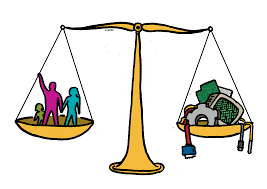
What can be done about it?
- Fundamental principles: A human rights-based approach to AI requires the application of a number of core principles, including equality and non-discrimination, participation and accountability In addition, the requirements of legality, legitimacy, necessity and proportionality must be consistently applied to AI technologies.
- Legislation and regulation: Effective protection of the right to privacy and interlinked rights depends on the legal, regulatory and institutional frameworks established by States. Data privacy frameworks should account for the new threats linked to the use of AI.
- Human rights due diligence: States and businesses should ensure that comprehensive human rights due diligence is conducted when AI systems are acquired, developed, deployed and operated, as well as before big data held about individuals are shared or used. The aim of human rights due diligence processes is to identify, assess, prevent and mitigate adverse impacts on human rights.
- Transparency: Developers, marketers, operators and users of AI systems should drastically increase their efforts regarding transparency around the use of AI. Effective enforcement of transparency obligations and data access, erasure and rectification rights contained in data privacy frameworks should be ensured.
Conclusion: Artificial intelligence generates challenges for human rights. Inviolability of human life is the central idea behind human rights, an underlying implicit assumption being the hierarchical superiority of humankind to other forms of life meriting less protection. These basic assumptions are questioned through the anticipated arrival of entities that are not alive in familiar ways but nonetheless are sentient and intellectually and perhaps eventually morally superior to humans. To be sure, this scenario may never come to pass and in any event lies in a part of the future beyond current grasp. But it is urgent to get this matter on the agenda.
Question: Discuss the various ways in which AI impacts human rights.
Sources:
This Day in History - World Rhino Day
On September 22, World Wildlife Fund (WWF), in 2010, announced World Rhino Day. This Day is observed every year to raise awareness about the different species of rhinoceros around the world and the dangers they face. There are five species of Rhinos that are found in Africa and Asia. Some species of rhinoceros are among the world’s most endangered animals, threatened by both habitat loss and poaching. The greater one-horned rhino (or “Indian rhino”) is the largest of the rhino species.

Sources:
Image of the Day - Notre Dame Cathedral
This is image of Notre Dame cathedral shrouded in scaffolding in Paris. France’s Notre Dame Cathedral is finally stable and secure enough for artisans to start rebuilding it. Two years ago, a shocking fire tore through its roof, knocked down its spire and threatened to bring the rest of the medieval monument down. It is the most famous of the Gothic cathedrals of the Middle Ages and is distinguished for its size, antiquity, and architectural interest. The foundation stone was laid by Pope Alexander III in 1163.

Sources:
Exercise 'Surya Kiran'
- Context: The 15th edition of the India-Nepal combined battalion level exercise 'Surya Kiran' commenced at Pithorgarh, Uttarakhand
- 'Surya Kiran' is a biannual military exercise which takes place alternately in both the countries.
- It is aimed at sharing experiences on gained during the conduct of various counter-insurgency operations and relief operations by both India and Nepal, develop interoperability.
- The training will also focus on humanitarian aid and disaster relief including medical and aviation support.

Source:
Adaptive Refresh Rate
-
- Context: Apple has added a new feature to the recently launched iPhone 13 Pro range with high-refresh-rate display.
- Refresh rate means how many times the image on a screen can be updated or “refreshed” every second –much faster than our eye can detect.
- It is measured in Hertz (Hz).
- The higher the refresh rate, the more times per second the screen is refreshing its pixels.
- Adaptive refresh rate is when the refresh rate changes from 10Hz to 120Hz depending on the content being played.

Sources:
Nag (ATGM), Helina
-
-
- Context: The Defence Research and Development Laboratory (DRDL) Hyderabad, has recently completed all trials of the Nag Anti-Tank Guided Missile (ATGM), Helina.
- HELINA is an indigenously made Helicopter based NAG which is a third-generation fire and forget class anti-tank guided missile (ATGM) system mounted on the Advanced Light Helicopter (ALH).
- The system can hit a target with a minimum range of 500 m and a maximum range of 7 km.
- The missile is guided by an Infrared Imaging Seeker (IIR), which makes it one of the most advanced Anti-Tank Weapons in the world.
- The missile system has all-weather day and night capability. It can penetrate through the conventional armor and can also destroy the explosive reactive armor.
-
The missile can engage targets both in direct hit mode as well as top attack mode.

Sources:
- Anti-Tank Guided Missile Helina will soon add to the Indian defence arsenal
- Anti-tank missile completes all trials
Image source:
Jaivik Kheti
- Context: Jaivik Kheti is a new initiative to redefine India’s Agri- business
- Jaivik Kheti portal is an E-commerce as well as a knowledge platform that aims to facilitate and promote organic farming globally.
- It is the initiative of Ministry of Agriculture (MoA), Department of Agriculture (DAC) along with MSTC (Metal Scrap Trade Corporation Limited)
- It is a one stop solution for facilitating organic farmers to sell their organic produce and buyers can avail organic products at their door step through the portal at much lower prices.
- The portal links various stakeholders like regional councils, local groups, individual farmers, buyers, government agencies and input suppliers for the all-inclusive development and promotion of organic farming.

It provides various price discovery mechanisms to help farmers get the best prices for their products through forward auction, price-quantity bidding, book building and reverse auction mechanisms.
Source:
Picture Source:
Creating citizen-centric police
Essence: The editorial centres on need for Police reforms and its possible benefits. The Supreme Court's directions in 'Prakash Singh' case identified “distortions and aberrations” as two major issues in the functioning of the police and suggested police reform aiming at citizen-centric policing. But, these reforms have remained on paper, obstructed by politicians and corrupt police officers.
Article further mentions, lack of public awareness and politician-officer-criminal nexus as the major causes of slow implementation of these reforms. The SC has suggested several provisions to ensure robust policy-making at both levels i.e., centre and the state. If police reforms are implemented in true earnestness, it will act well in time to prevent crime. The article suggests that it is in the interest of all of us to pursue police reforms vigorously and to hold Union and state governments accountable for their failure to do so.
Why should you read this article?
- To get an overview of issues associated with the functioning of police in India and why the process of police reform is slow.
To understand the reason of intervention of the SC and what reforms it has suggested.
Source:
What counts is seldom counted
Essence: The editorial focusses on the fact that decadal census, which is receiving less importance as compared to debate on caste census data or election rallies, is a far more important activity which has not yet begun due to covid crisis. This highlights the importance of digital census- quality, coverage, quick results- which could have valuable inputs for policymaking.
Presently, the delay in release of data by government, lack of nuanced exploration of data and largescale individual surveys by ministries have reduced the significance of this decadal exercise. The census data engagement could go beyond analysis of sex-ratio and work participation. The disaggregated attributes used in census data collection should serve a purpose- awareness about failure to receive entitlements, selective adversity or policy designing. Focus should be on intervention and progress rather than wrongdoing or communalization of issues. Eg blaming certain minority community for high fertility rates rather than working at identifying the root cause and working towards better family management.
Why you should read this article?
- To understand the intention behind carrying out census.
- To know the reasons for decreased significance of census.
Source:
The WTO threat to Indian agriculture’s MSP regime
Essence: The lack of policy space to run a food security programme in the Agreement on Agriculture (AoA) at the World Trade Organization (WTO) is an important area of concern for India and other developing countries. AoA are meant to cut trade-distorting domestic support that member-countries provide to their agriculture. India’s MSP-based procurement system falls under the ‘amber box’ which covers those measures that are trade-distorting.
India can move away from price-based support to its farmers to income-based support, which will not be trade-distorting under AoA. However, given the enormous political importance and ongoing farmer agitations, it is not possible for India to dilute the current system. India (as part of G33) should bargain hard at the upcoming WTO’s 12th ministerial conference for exemption of procurements done for food security purposes (Peace clause).
Why you should read the article?
- To understand the rules of Agriculture subsidies of WTO
- To know the linkages of India’s MSP Programme and WTO rules on agriculture.
Source:
A Forest Officer leading the way for Tiger conservation
Background
- Legacy: The history of India has had a culture of tiger hunting for pleasure, leisure, showcase of royalty, power and wealth.
- Patronage: Officers of British government and royal families hunted down these wild cats.
- Escalation: phenomenal decrease in tiger killing post-independence.

Efforts of Kailash Sankhala
- Resurrection: The guilt of giving initial permissions to hunting, as the forest officers, repurposed tiger conservation efforts.
- Survey: He started field research work in understanding the secretive lives of tigers from their behavior, population dynamics, daily activities, etc.
- Conservation efforts: Played a fundamental role in wildlife conservation in India by appealing the IUCN and erstwhile PM Indira Gandhi to ban tiger conservation.
- Director: Headed Project Tiger for the incredible work in tiger conservation.
Awards
- He was awarded the Padma Shri in 1992 for lifetime of service to wildlife conservation.
Quote:
“A true conservationist is a man who knows that the world is not given by his fathers but borrowed from his children.” — John James Audubon
Source:
Share the article
Get Latest Updates on Offers, Event dates, and free Mentorship sessions.

Get in touch with our Expert Academic Counsellors 👋
FAQs
UPSC Daily Current Affairs focuses on learning current events on a daily basis. An aspirant needs to study regular and updated information about current events, news, and relevant topics that are important for UPSC aspirants. It covers national and international affairs, government policies, socio-economic issues, science and technology advancements, and more.
UPSC Daily Current Affairs provides aspirants with a concise and comprehensive overview of the latest happenings and developments across various fields. It helps aspirants stay updated with current affairs and provides them with valuable insights and analysis, which are essential for answering questions in the UPSC examinations. It enhances their knowledge, analytical skills, and ability to connect current affairs with the UPSC syllabus.
UPSC Daily Current Affairs covers a wide range of topics, including politics, economics, science and technology, environment, social issues, governance, international relations, and more. It offers news summaries, in-depth analyses, editorials, opinion pieces, and relevant study materials. It also provides practice questions and quizzes to help aspirants test their understanding of current affairs.
Edukemy's UPSC Daily Current Affairs can be accessed through:
- UPSC Daily Current Affairs can be accessed through Current Affairs tab at the top of the Main Page of Edukemy.
- Edukemy Mobile app: The Daily Current Affairs can also be access through Edukemy Mobile App.
- Social media: Follow Edukemy’s official social media accounts or pages that provide UPSC Daily Current Affairs updates, including Facebook, Twitter, or Telegram channels.

